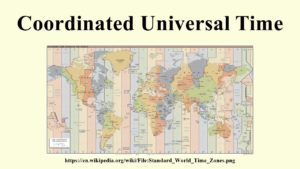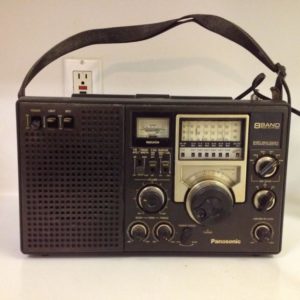
Got a cell phone in your pocket or purse? How about a GPS in your car? I’m sure you have a computer, otherwise you wouldn’t be reading this right now.
Then you know, within a teeny fraction of a second, exactly what time it is. We take such a situation very much for granted. Some of us even wear watches that communicate with an atomic time server several times a day, making microscopically small adjustments to ensure that the time displayed is exactly right.
But it wasn’t always that way, was it, Boomers? When we were younger, the exact time was largely unknown. The local bank might have had a big clock outside for all to see, and presumably, it was accurate. It had better be, the whole town might have been setting their watches to it.
In my hometown of Miami, Oklahoma, at precisely noon each day, the B.F. Goodrich plant would let loose with a blast on a steam whistle which would alert plant workers (and everyone within a couple miles) that it was lunchtime. Many a wearer of a wristwatch would stop what they were doing and adjust their timepiece to 12:00 noon.
We had other ways to set our timepieces back then, of course. Today’s article will remind you of what they were.

If your dad had a short wave radio like mine did, then the exact time was readily available on a station located in Denver. In fact, in researching this piece, I learned that the station, WWV, is still broadcasting away on a number of frequencies.
“At the tone, the time will be eleven hours, forty-three minutes, coordinated universal time.”
Dad would set his Seiko chronometer, brought back from Asia by my older brother, to the precise minute. It would be good for a week or so, such was the accuracy of the fine auto-wind timepiece.
You could also get the exact time by calling a Denver number, if you could abide the expensive long-distance rates back then.
Coordinated universal time dates back to the late nineteenth century, when the Royal Observatory at Greenwich, England was selected as the world’s official timekeeper. Your own local time was described as being plus or minus GMT (Greenwich Mean Time) depending on whether you were located east or west of the British town. For its early history, the clock depended on the movement of the earth. But there’s a problem: the pull of the tides is gradually slowing down the earth’s rotation. Additionally, major physical events like the 2011 Japan earthquake also affect the length of the day just a tad. A more accurate clock was needed.
This breakthrough occurred in 1955, with the invention of the atomic cesium clock. The next year, the atomic clock was used by the U.S. National Bureau of Standards to broadcast the exact time via short wave. A leap second is added every now and then (every eleven years or so) to keep the clock in step with earth’s ever-diminishing day.
Thus, geeky teens could keep their LED watches perfectly on time for counting down school bells and the like.
Another way to tell the exact time was to listen for the chime on CBS. When a CBS show would start at the top of the hour, it would be preceded by a “dong” that the savvy viewer knew was the exact beginning of said hour.
The CBS tone disappeared some time in the early 80’s. By then, digital time had gotten much more accurate for the average Joe than the mechanical version. Nowadays, of course, we might occasionally change our wristwatch time, or change a few clocks twice a year for Daylight Savings Time, but we don’t worry about whether our cell phone, computer, or GPS has the right time. It’s all fully automatic.
However, back in the day, if you wanted the exact time, you had to earn it!